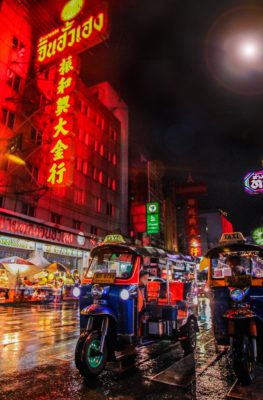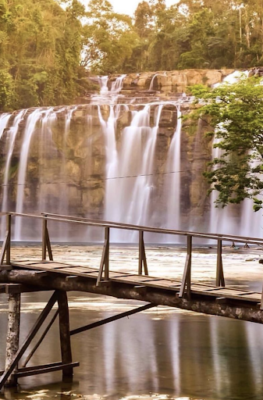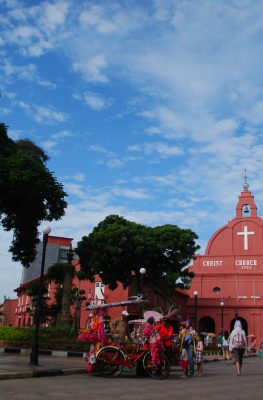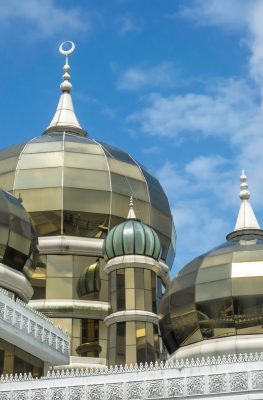Published on October 23, 2015

Only a few places in the world bear the coveted UNESCO seal of approval: the conferral of World Heritage status on a site by the United Nations Educational, Scientific and Cultural Organization (UNESCO) brings in both prestige and tourism revenue, and thus is hotly contested.
But this United Nations body is famously strict concerning awards: even culturally impressive sites like Bagan in Myanmar fail to live up (though the inclusion of Myanmar’s Pyu Ancient Cities may have softened the blow somewhat). Because of UNESCO’s lofty standards, you can be sure that the sites listed here – remarkable for either natural or cultural value – truly deliver the goods.
Laos’ Luang Prabang. The Lan Xang Kings of Laos once ruled from this city at the confluence of the Nam Khan and Mekong Rivers; they continued to rule the land by name even after the French invaded Indochina and became the area’s new overlords.
As two rivers become one around Luang Prabang, so do the French and traditional Luang Prabang architecture share the same spotlight in this city. French colonial structures stand along the city’s main street, competing for attention with Luang Prabang’s 33 “vat”, or Lao Buddhist pagodas.
The oldest vat – Wat Xieng Thong – dates back to the 16th century, its intricately carved exterior catching photographers’ attention. The locals still follow ancient traditions, ranging from the morning almsgiving to Buddhist monks to ceremonies held to appease evil spirits.
Read UNESCO’s entry on the town of Luang Prabang.
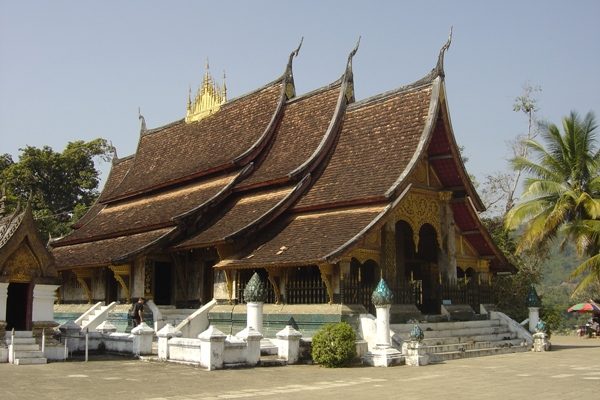
Malaysia’s Gunung Mulu National Park. What do you get when you combine a karst landscape and high biodiversity? You get something like Gunung Mulu National Park in Sarawak, Borneo Island – a 52,864-hectare park with a taste for superlatives.
The water works on the karst to create some of the largest caves in the world – one of them, Deer Cave, hosts about three million wrinkled-lipped free-tailed bats, the largest such community known. Another cave system holds millions of cave swiftlets. All told, almost 300 kilometers of caves wind through the depths.
Reigning over all this is Gunung Mulu, rising 2,376 meters over the park; the terrain below it contains endless rivers, floodplains, and ridges, the result of the incomparable interplay between water and limestone. 17 vegetation zones demarcate the park, the vast majority consisting of lowland and montane rainforest cover. Needles of limestone called “pinnacles” jut out periodically through the treetops.
Read UNESCO’s entry on Gunung Mulu National Park.
Myanmar’s Pyu Ancient Cities. The remains of Myanmar’s Pyu fortresses beat popular favorite Bagan to secure the country’s first entry into Myanmar’s World Heritage List.
The ruins of Halin, Beikthano and Sri Ksetra can be found in Natma Taung National Park in the country’s central dry zone. They were built by the Pyu peoples, who lived in this part of the Irrawaddy basin from the 2nd century BCE to 1100 CE. Their language and culture have long been lost, with the Pyu Cities’ ruined walls providing the only hint of their grandiose ways.
The largest of the three, Sri Ksetra, was Southeast Asia’s largest walled city during its heyday, covering a massive (for its time) area of 46 square kilometers, commanded at it center by a royal palace and guarded by a circular wall with a diameter of over 4 km.
Read UNESCO’s entry on Pyu Ancient Cities.
The Philippines’ Rice Terraces in the Cordilleras. They have stood in the Cordilleras for over 2,000 years – a series of ancient rice terraces carved into the mountains by the Ifugao tribespeople of the Philippines’ Mountain Province. Literally a thousand generations have built on their ancestors’ hard work, developing an organic rice cultivation infrastructure where the breathtaking terraces are only the most visible part of the plan.
The Ifugao plant forests above the terraces to ensure adequate water supply. From the forests, water flows down into the terraces, draining through a complex series of sluices, channels, dams and pipes that ensures that each terrace gets its fair share. The Ifugao rice farmers who manage this complex system live in villages at the bottom of the valley.
Read UNESCO’s entry on the Rice Terraces.
Thailand’s Dong Phayayen-Khao Yai Forest Complex. This sprawling 615,500 hectare parcel of rainforest lies close to Thailand’s border with Cambodia, and aggregates five protected areas within the Thai ambit: Khao Yai National Park, Thap Lan National Park, Pang Sida National Park, Ta Phraya National Park, and Dong Yai Wildlife Sanctuary.
Taken as a single unit, the Dong Phayayen-Khao Yai Forest Complex earns its UNESCO nod as a natural treasure by serving as a natural habitat for a number of endangered and vulnerable animal species, among them the Asian Elephant, the Siamese Crocodile, and the Banteng. Two different species of gibbon live amidst its trees, the only area in the world where two such animals share overlapping ranges.
All told, 112 species of mammal, 392 bird species and 200 reptile and amphibian species make their home in the Dong Phayayen-Khao Yai Forest Complex. They all rely on the complicated tropical forest ecosystem for their continued survival – with over 80% forest cover, this place may be their last, best hope.
Read UNESCO’s entry on the Dong Phayayen-Khao Yai Forest Complex.
Vietnam’s Ha Long Bay. About 1,600 limestone islands rise out of Ha Long Bay’s waters, giving rise to the myth that the curvilinear islands form the back of a dragon winding in and out of the water.
As a natural building material, karst (limestone) creates fantastic, almost otherworldly structures when combined with water erosion – as evidenced by the endless caves, lagoons, arches and almost implausibly steep and sharp-edged limestone pillars jutting into the air.
Ha Long Bay, almost alone among UNESCO’s natural World Heritage sites in Southeast Asia, receives millions of tourists every year, most of them exploring the waters on “junks” that number in the dozens. The tourist tide has not eroded Ha Long Bay’s beauty in any way – something to be grateful for when you’re floating on these waters gazing at the amazing view.



